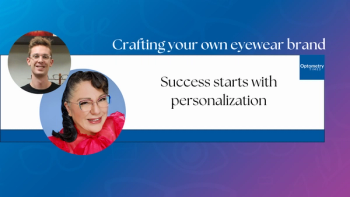
More options available for corneal repair
Corneal transplantation is moving away from penetrating keratoplasty toward less invasive endothelial keratoplasty procedures in which only the damaged portion of the cornea is removed and replaced with donor cells.
Key Points
Chehalis, WA-Corneal transplantation is moving away from penetrating keratoplasty (PK) toward less invasive endothelial keratoplasty (EK) procedures in which only the damaged portion of the cornea is removed and replaced with donor cells, according to David Stanfield, OD, FAAO.
While PK is a well-established procedure that generally produces excellent visual results, it has several drawbacks that have spurred surgeons to develop and modify EK techniques, said Dr. Stanfield, Pacific Cataract and Laser Institute, Chehalis, WA.
Following PK, the possibility that the wound will reopen is a concern for at least a year and potentially for the patient's lifetime. Other issues include corneal irregularities and the risk of infection from sutures. A major drawback with conventional PK is that those patients usually develop significant amounts of induced corneal astigmatism, prolonging visual recovery.
EK options
EK was first performed in the 1950s, but was not pursued aggressively until the late 1990s. Descemet's stripping automated endothelial keratoplasty (DSAEK) and Descemet's stripping endothelial keratoplasty (DSEK) are the most commonly performed EK procedures today, Dr. Stanfield said.
"Early EK procedures-including posterior lamellar keratoplasty (PLK) and deep lamellar endothelial keratoplasty (DLEK)-have been refined as surgeons gained experience. The current menu of procedures includes DSAEK, DSEK, and Descemet's membrane endothelial keratoplasty (DMEK). DSEK and DSAEK have a good track record," he said.
Postoperative visual recovery is usually excellent, and with DMEK, a greater percentage of patients have 20/20 visual acuity compared with traditional PK, DSEK, and DSAEK. Visual rehabilitation typically occurs within a few weeks, compared to a year or more with penetrating keratoplasty.
In DSAEK, donor tissue is transferred to an artificial chamber, an automated microkeratome is activated, and donor tissue is trephined. During DSEK procedures, the donor is manually prepared. Steps for preparing the recipient cornea are stripping and removing the Descemet's membrane, folded insertion of the donor through a small, temporal incision, unfolding the tissue with an air bubble, and removal of some of the air.
In patients undergoing DSAEK or DSEK, the donor endothelium is attached to a small layer of stroma. Although the cornea can be remarkably clear postoperatively in these patients, vision may be less than anticipated, probably due to the fact that the extra stromal layer creates a more irregular optical interface.
Newsletter
Want more insights like this? Subscribe to Optometry Times and get clinical pearls and practice tips delivered straight to your inbox.
















































.png)


